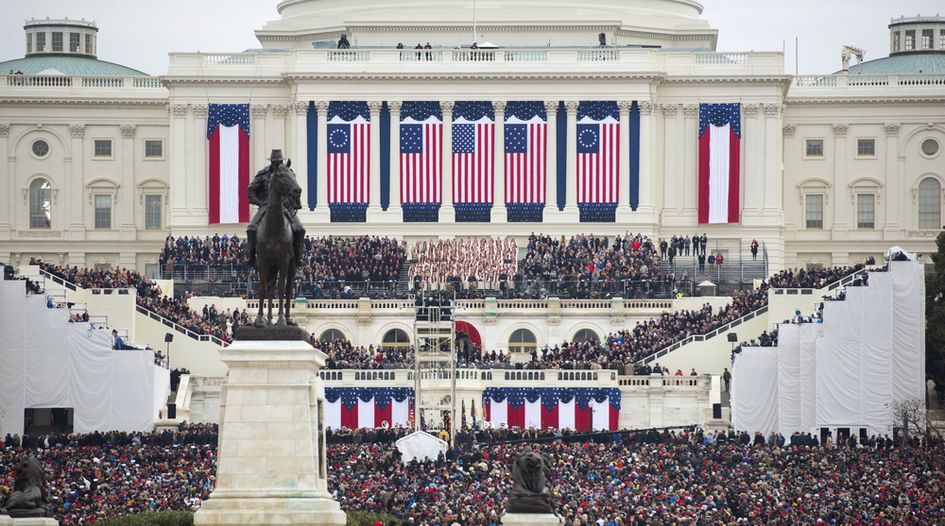It’s time to take a different approach to appointing the USPTO head

It probably hasn’t escaped most IAM readers’ attention that this is an election year in the US. You don’t have to be resident inside Washington DC’s maligned beltway to appreciate just what is at stake at a time when a fractured Democratic field is trying desperately to produce a credible candidate to challenge President Trump.
From an IP perspective, this means that come early November, should Trump suffer a defeat at the polls, we might be speculating over the identity of the next head of the US Patent and Trademark Office (USPTO).
But even with a Trump victory - which remains a very real prospect given the state of the Democratic field and a remarkably robust US economy - the current director, Andrei Iancu, might choose to take his leave and return to the private sector.
I asked Iancu at a recent event in the US capital if he was prepared to commit to staying on in a second Trump term. His reply showed that, as well as spending the last two years reforming the US patent system, Iancu has also learned plenty from the politicians he has been rubbing shoulders with.
“I serve at the pleasure of the President and I’ll serve as long as he wants me to serve,” he said, before adding that it had been “very rewarding to help the system a little bit”.
But regardless of who wins in November, why should we actually expect a change at the top? After all, IP is not a partisan issue, so why not appoint the USPTO director for a longer fixed term that doesn’t automatically come to an end with a new administration. An incoming president could then still be given the option of appointing their own preferred candidate or sticking with the incumbent to help provide more consistency in IP policy.
In Director Iancu’s case, he has emerged as a hugely popular USPTO head in many parts of the IP community thanks to his reforms of the Patent Trial and Appeal Board (PTAB), his efforts to increase certainty around 101 and his campaigning about the importance of a robust patent system to the innovation economy. So, whatever your thoughts on a second Trump term, plenty of rights owners would welcome the consistency that would come from having him stay on beyond 2021.
Over the last few months I have asked several senior people in IP policy circles about the idea of giving the USPTO director a longer term. The kinder responses have boiled down to “interesting idea, but…”.
After the “but” follows a list of possible obstacles to consider. There is, for instance, the loss in income that almost all new directors experience as they swap the millions of dollars they can make in-house or in private practice for a lowly six-figure government salary. For example, profits per equity partner at Iancu’s old firm of Irell & Manella are a shade under $3 million, according to The American Lawyer.
Throw in the gruelling travel schedule (coach not business flights, IAM understands), the stress of managing a multi-billion-dollar agency with creaking IT and the demands of keeping your bosses happy at the Commerce Department and 1600 Pennsylvania Avenue, not to mention your diverse and often fractious user community, and the prospect of staying in the job long-term may not exactly appeal.
Then, from an administration’s perspective, being able to appoint the head of the USPTO is part of the extensive web of patronage that incoming presidents get to benefit from as they nominate thousands to political positions across DC.
In contrast, the head of the European Patent Office, which as our benchmarking surveys have shown continues to set the agenda in terms of high-quality grants, is appointed for a five-year term. They are also generally picked from the ranks of Europe’s civil servants and so don’t tend to give up multi-million-euro pay packages when they take the job. Meanwhile in Japan, the head of the JPO is also typically drawn from the civil service and is at the other end of the length of tenure spectrum, serving for one year with the option for a second 12-month stint.
At a time when the US is facing the daunting geo-political challenge of addressing a serious shortfall in 5G leadership and has been considering some radical proposals to counter China’s rise as a tech powerhouse, it has never been more important for the country to have an innovation agenda that stretches across administrations and in which IP is an important part.
Of course, the USPTO doesn’t just grant patents to American companies. With overseas businesses receiving the majority of patents granted in the US, it wouldn’t just be domestic players that would benefit from greater consistency at the top of the country’s IP system. But through meetings with stakeholders, constantly banging the drum for the merits of US intellectual property and helping to shape policy with his colleagues at the Commerce Department and in the White House, Iancu has demonstrated how a USPTO head can have a significant impact on innovation policy and on the value of IP rights.
That shouldn’t have to change whoever the US electorate votes for come November.

